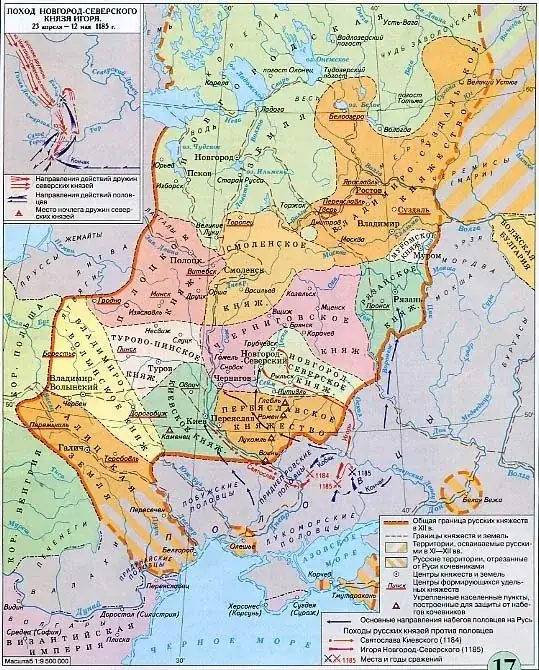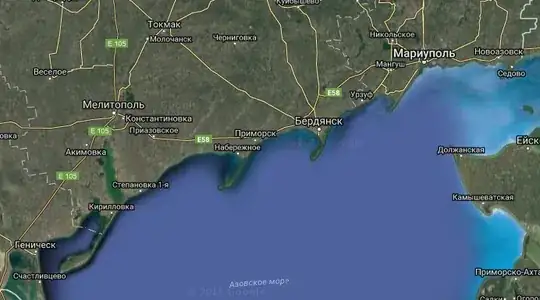In Indo-European mythology, particular, in Slavic, Baltic and Germanic mythologies there is a so-called World Tree, more precisely, World Oak that plays a sacred role and connects the underworld to heaven.
It is mentioned in Pushkin's poem "Ruslan and Ludmila" which starts "At Lukomorie there is an oak green, a golden chain is on that oak..."
I looked up what Lukomorie is. It literally means "a sea arc, bow". Russian Wikipedia describes it as "in Slavic mythology, a holy place at the edge of universe, where the World Tree grows".
The The Tale of Igor's Campaign describing Prince Igor's campaign of 1185 uses this word to refer to the area near the North-Western shore of the Azov sea, as do other sources.
Here is a map that labels the tribe occupying the region as "Lukomorie Polovtsi":
A Google map of the area indeed shows bow-like formations:
But what is more interesting, is where the sea reached formerly. In fact, formerly the sea occupied the arc-shaped gulf (now called Milk Liman) reaching beyond the modern city of Melitopol.
Lets look even closer.
This is a place that was formerly situated at the very end of the bow-shaped gulf, at the very shore of the sea. The bright spot on the photo is the archeological site Kamennaya Mogila. The place was venerated as a holy site at least from the 20th century BC to 12th century AD (possibly, even 17th century), well after the adoption of Christianity by the Kievan Rus. Some researchers (Rossokha) think it was venerated since the era of Proto-Indo-European unity, namely, Sredny Stog culture. This makes it the longest continuously venerated pagan holy site. The innards of the site are inscribed with a non-deciphered ancient language.
The site is located at the place of ancient estuary of the river, called by Herodotus as Γέρρος, which a Scythian name, that comes from a Sanskrit-related language where it was called Gorasa which literally means "milk", and even in Modern Russian it is called "Milk river".
That said, I wonder, how probable it is that the so-called World Oak was originally located at this place.





